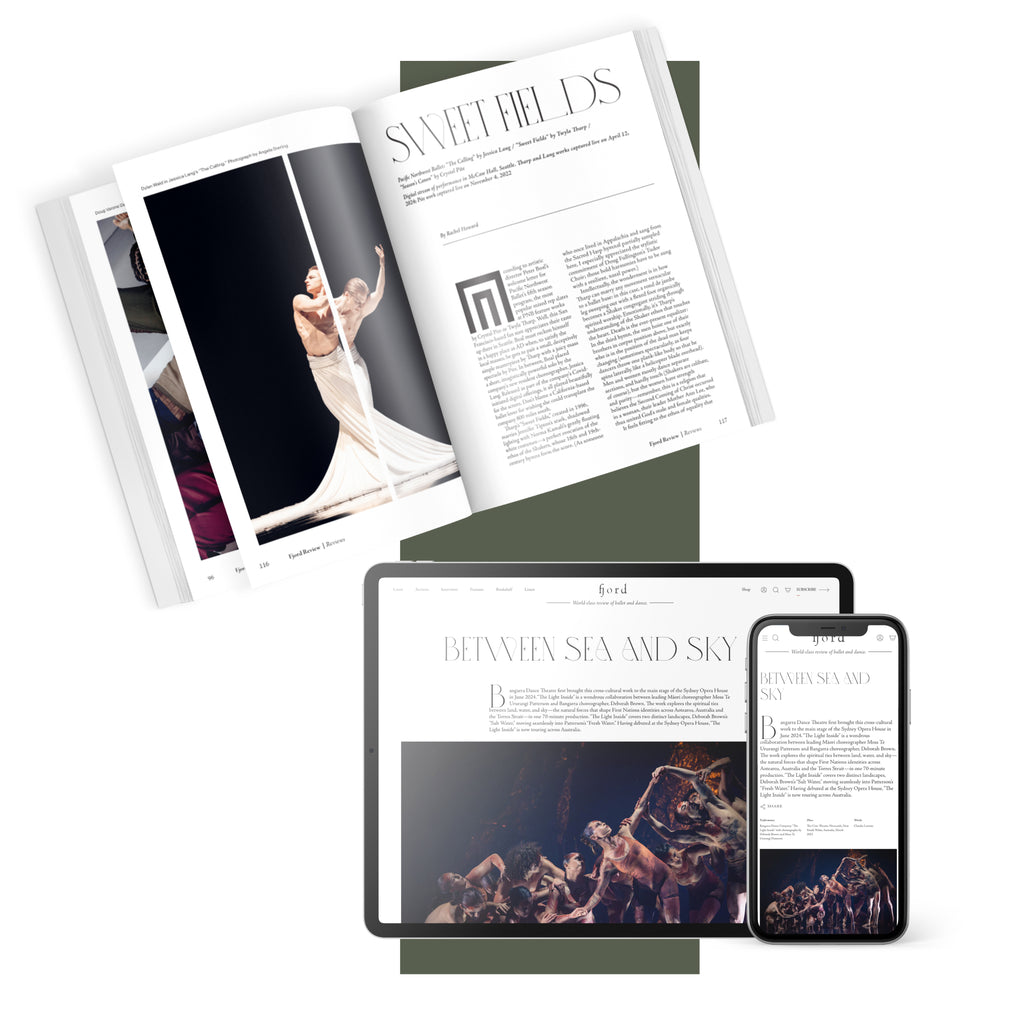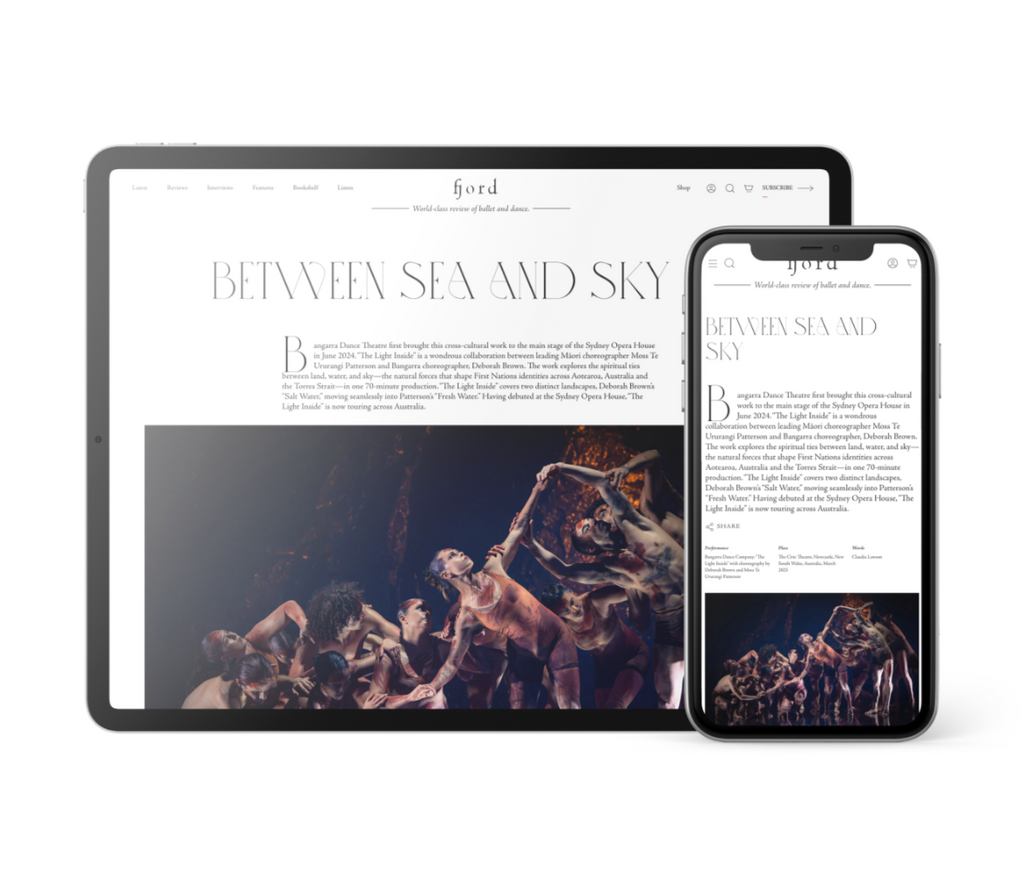Natural Histories
Miriam Miller steps into the center and raises her arm with deliberation, pressing her palm upward to the vaulted Gothic ceiling of the cathedral.
Continue Reading
World-class review of ballet and dance.
In Seoul, South Korea, at the Jongmyo shrine, a royal ancestral ritual of prescribed music and dance is performed annually. The tradition to praise and honor the ancestors of the Joseon Dynasty (1392-1910) has been kept for over 600 years. This dance form, called ilmu, which translates as “line dance” or “one dance,” requires 64 dancers positioned in eight lines of eight moving as one in restrained unison. Wearing long, full, colored robes and carrying symbolic props in their hands, the dancers perform the slow, controlled, set sequences reinforcing Confucian ideals—order, harmony of yin and yang, and filial piety—in the service of societal stability. Similar rituals were originally practiced in China as well, but the practices were discontinued there with the abolition of the monarchy.
Performance
Place
Words



“Uncommonly intelligent, substantial coverage.”
Your weekly source for world-class dance reviews, interviews, articles, and more.
Already a paid subscriber? Login

Miriam Miller steps into the center and raises her arm with deliberation, pressing her palm upward to the vaulted Gothic ceiling of the cathedral.
Continue ReadingIn a series called “Just Dance” on Nowness—a site I sometimes visit to see what’s up in the world of “genre busting” dance films that make it onto this stylized platform—I sometimes find little gems that quietly rock my world.
Continue ReadingBack in October, New York City Ballet got a new cowboy. His arrival occurred in the final section of George Balanchine’s “Western Symphony.”
Continue ReadingWhen Richard Move enters from stage left, his presence is already monumental. In a long-sleeved gown, a wig swept in a dramatic topknot, and his eyes lined in striking swoops, the artist presents himself in the likeness of Martha Graham—though standing at 6’4, he has more than a foot on the late modern dance pioneer.
Continue Reading
comments